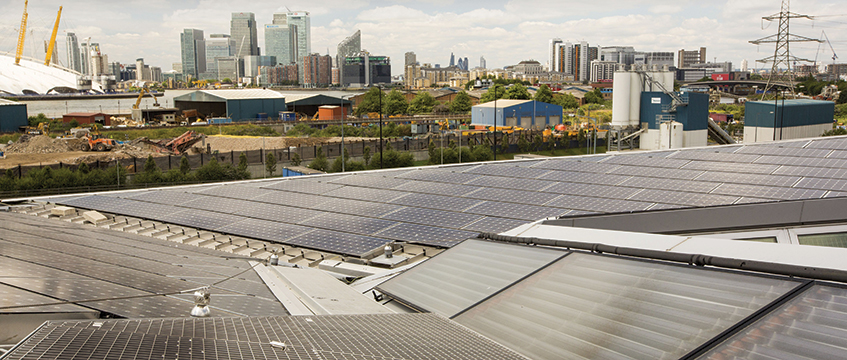Increasingly, businesses and individuals are investing in solar panel installations. Some of these can be very expensive and the payoff for the investment is often 5-10 years or more away. However, solar panel systems are extremely sensitive to light levels falling on them and if they are shaded from direct sunlight it can be enormously damaging to their energy production.
It is suggested by installers that a panel without direct sunlight is only half as effective as one which sees direct sunlight. Naturally, this is an important question for those looking to install panels, as halving the efficiency of the installation doubles the time for that installation to break even and may make it uneconomic to pursue it altogether.
Protecting the investment
It can be very difficult for landowners, whether domestic or commercial, to protect their solar installations from being overshadowed by new buildings constructed adjacent to them. In short, the two options that are available are either the planning system or a right to light under the common law.
Planning has historically not provided much protection to solar installations. Indeed, there was often deliberate building to stop up windows to prevent acquisition of common law rights to light and this was not prevented by the planning system. However, things have started to change. The National Planning Policy Framework gives general statements regarding the desirability of supporting lower carbon energy and heat generation systems, including the following: “To help increase the use and supply of renewable and low carbon energy and heat, plans should […] provide a positive strategy for energy from these sources, that maximises the potential for suitable development, and their future re-powering and life extension, while ensuring that adverse impacts are addressed appropriately.”
The High Court has held that for a local authority to ignore this statement was unreasonable. In R (on the application of McLennan) v Medway Council and another [2019] EWHC 1738 (Admin), the planning decision of the local authority was overturned on judicial review. A householder had objected to the building of a dormer next door, on the basis that it would have reduced the light available to the solar panels on his land. The court held that the general support in the NPPF for renewable energy had to be extended to more specific considerations in support of planning decisions, otherwise the policy would be pointless.
The fact the NPPF referred to new developments did not limit its application and it should be applied to existing developments as well. There was also no relevance in the fact the use being protected was electricity generation rather than a classically domestic use.
The decision in McLennan is important, but it has limits. It was specific to a decision on a residential property and to a relatively small solar installation. Whether and to what extent these factors would apply to a larger commercial installation would be a different question. In addition, it provides no protection in situations where planning permissions are not needed, such as works falling within existing permitted development. In these situations, the only protection are traditional common law rights to light.
Rights to light
A right to light can be acquired by agreement, implication or prescription. The difficulty for solar panels is that the right usually granted is insufficient for use.
First, the right to light is specifically for light through a window or other aperture rather than simply allowing for light incidence on a building or something fixed to it. Solar panels are clearly not apertures. At best it might be argued that the front glass of a solar panel is an aperture which should benefit from the right to light. But that is a difficult argument to make and it would require persuading the courts to extend the scope of protected usages of light.
The second problem is the amount of light needed. The common law right to light is minimal. It is simply for the amount of light needed to see in a room that is shaded by a building. This is nowhere near enough light for a solar panel installation to produce a meaningful amount of energy.
However, there are situations where the court has recognised greater needs. In Allen v Greenwood [1979] 1 EGLR 137, the Court of Appeal held that the amount of light protected by the common law right to light was “the light required for the beneficial use of the building for any ordinary purpose for which it is adapted”. In that case, this meant that a greenhouse was entitled to the greater amount of light needed to grow the tomato plants within it. By extension a solar panel installation should be entitled to the amount of light needed to operate effectively.
The third problem is the acquisition of the right. Absent an express or implied agreement, the right to light can only otherwise be acquired by prescription. That is by use for 20 years without objection. This is largely irrelevant as there are few solar installations currently operating of that age and so prescription is not a mode of right acquisition that can be relied on.
Seeking agreement
As things stand landowners cannot rely on the law to protect them if they are installing solar panels. They may be able to gain assistance from the planning system, but that cannot be relied on in relation to all types of development.
Ideally, landowners should seek rights to light agreements with those landowners around them who might be in a position to build in such a way as to create shade over a solar installation. But even then, they will need to be very specific as to the purpose of the agreement and the amount of light they are seeking if they are to derive true protection.
David Smith and Priya Sejpal are partners in the property litigation team at JMW Solicitors









